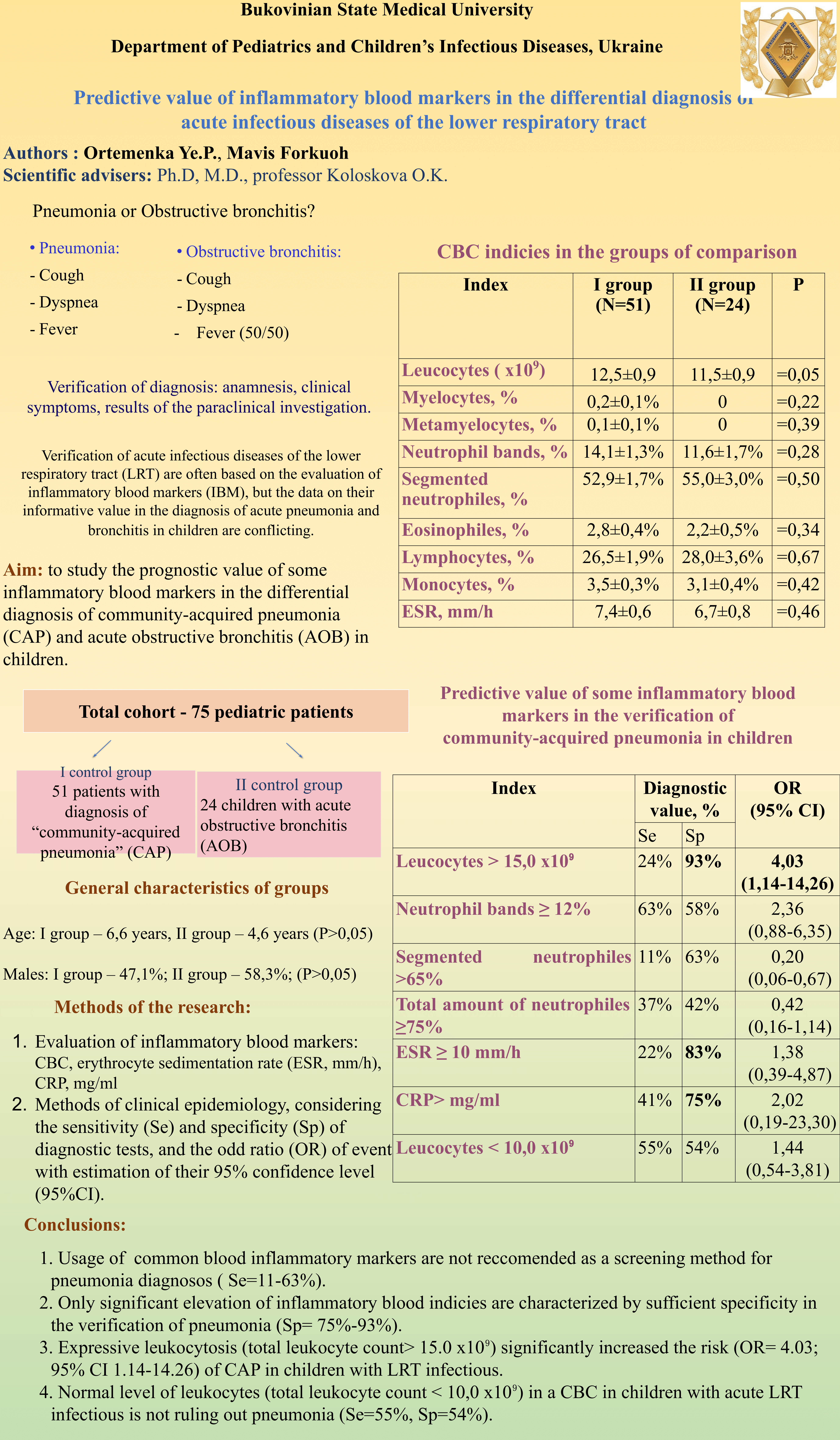Conference 2021 Poster Presentation
Project title
Predictive value of inflammatory blood markers in the differential diagnosis of acute infectious diseases of the lower respiratory tract
Authors and Affiliations
Yevheniya Ortemenka1, Mavis Forkuoh1
1. Department of Pediatrics and Children’s Infectious Diseases, Bukovinian State Medical University, Chernivtsi, Ukraine
Abstract
Background
Verification of acute infectious diseases of the lower respiratory tract (LRT) are often based on the evaluation of inflammatory blood markers (IBM), but the data on their informative value in the diagnosis of acute pneumonia and bronchitis in children are conflicting.
Methods
The aim of this survey was to study the prognostic value of some inflammatory blood markers in the differential diagnosis of community-acquired pneumonia (CAP) and acute obstructive bronchitis (AOB) in children. At the pulmonological department 75 children have been examined. In the I clinical group 51 patients with CAP were enrolled, and the second (II) group consisted of 24 children with AOB. The results have been analyzed by the methods of clinical epidemiology, considering the sensitivity (Se) and specificity (Sp) of diagnostic tests, and the odd ratio (OR) of event with estimation of their 95% confidence level (95%CI).
Results
There has showed that in the patients with CAP such IBM as: leukocytosis, relative neutrophilosis (the percentage of both immature and mature neutrophilic granulocytes in the white blood cell differential ≥ 75%), left shift of leukocyte formula (band neutrophils number ≥ 12%), elevation of erythrocyte sedimentation rate (ESR) or high level С-reactive protein (CRP) were characterized by low sensitivity (Se of diagnostic tests under mentioned distribution point was consequently: 24%, 37%, 63%, 22%, 41%), indicating that they are not advisable for use as the screening tests for the diagnosis of CAP. At the same time, only some IBM were characterized by sufficient specificity (in the range from 75% to 93%) in the verification of pneumonia only under their significant increase (total leukocyte count> 15.0 x10⁹, ESR> 10 mm/h and CRP level in blood > 6 mg/ml), indicating that they are relevant enough, but only for confirming inflammation of the lung parenchyma. Simultaneously, only expressive leukocytosis (total leukocyte count> 15.0 x10⁹) significantly increased the risk (OR= 4.03; 95% CI 1.14-14.26) of CAP in children with LRT infectious.
Conclusions
Thus, the low diagnostic and predictive roles of the IBM for the diagnosis of acute lungs’ parenchyma inflammation, as well as in the differential diagnosis of CAP and AOB in children have been confirmed.

